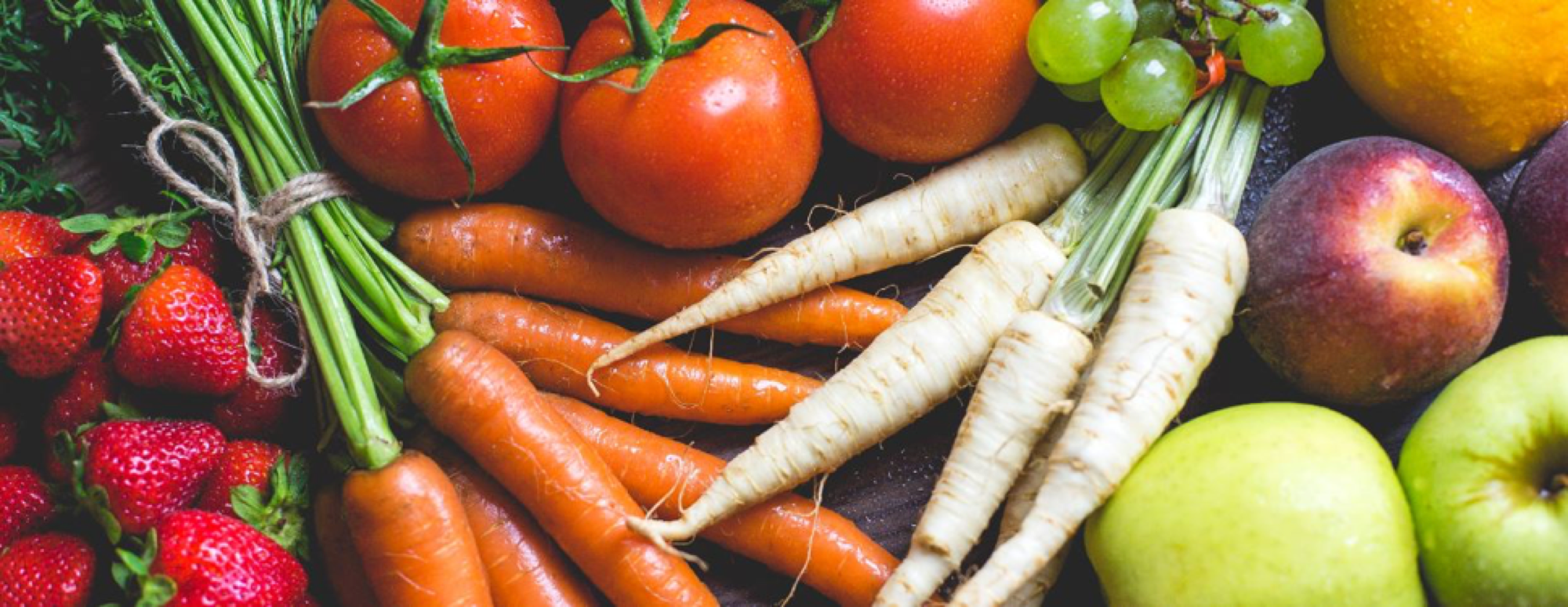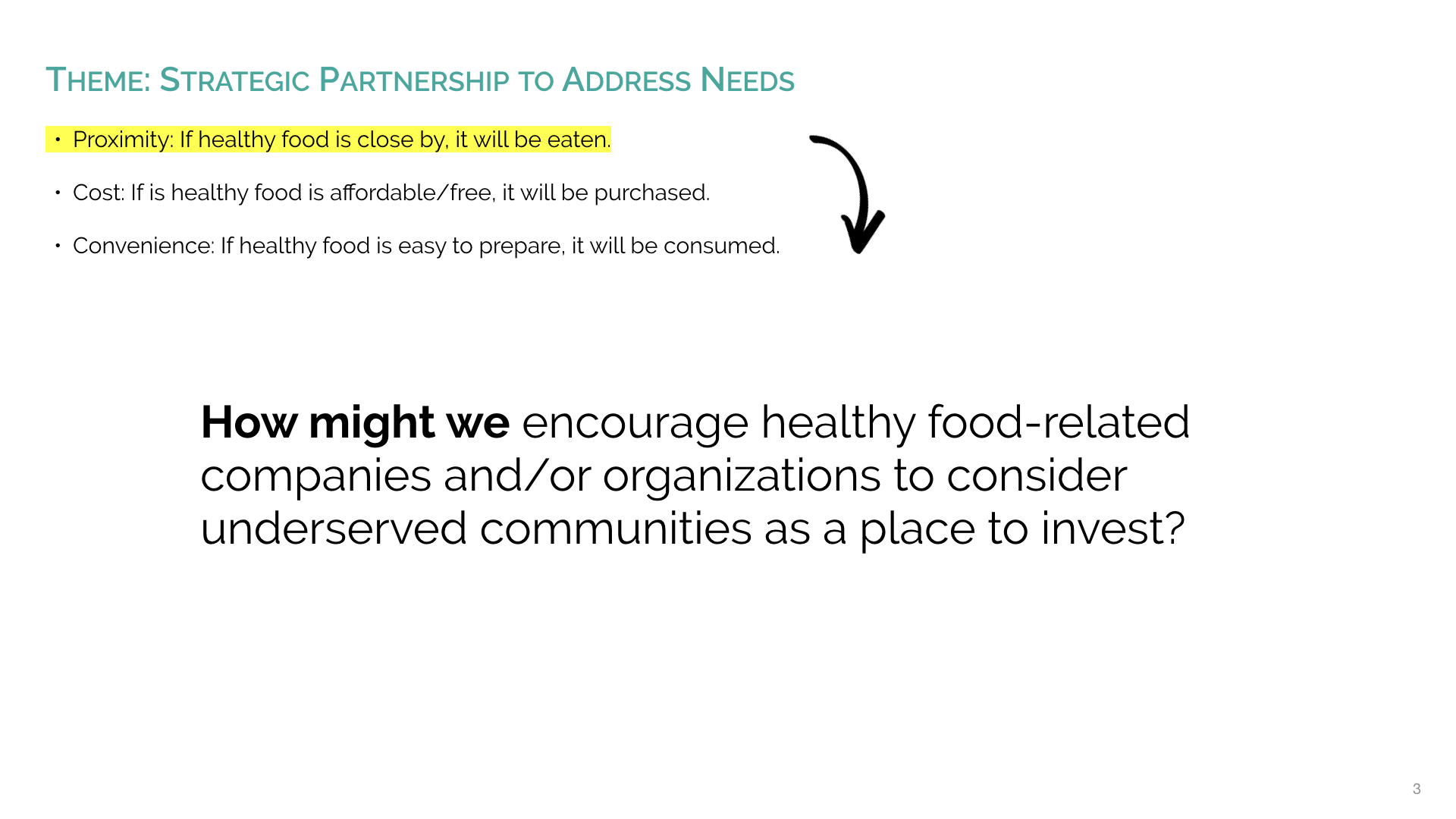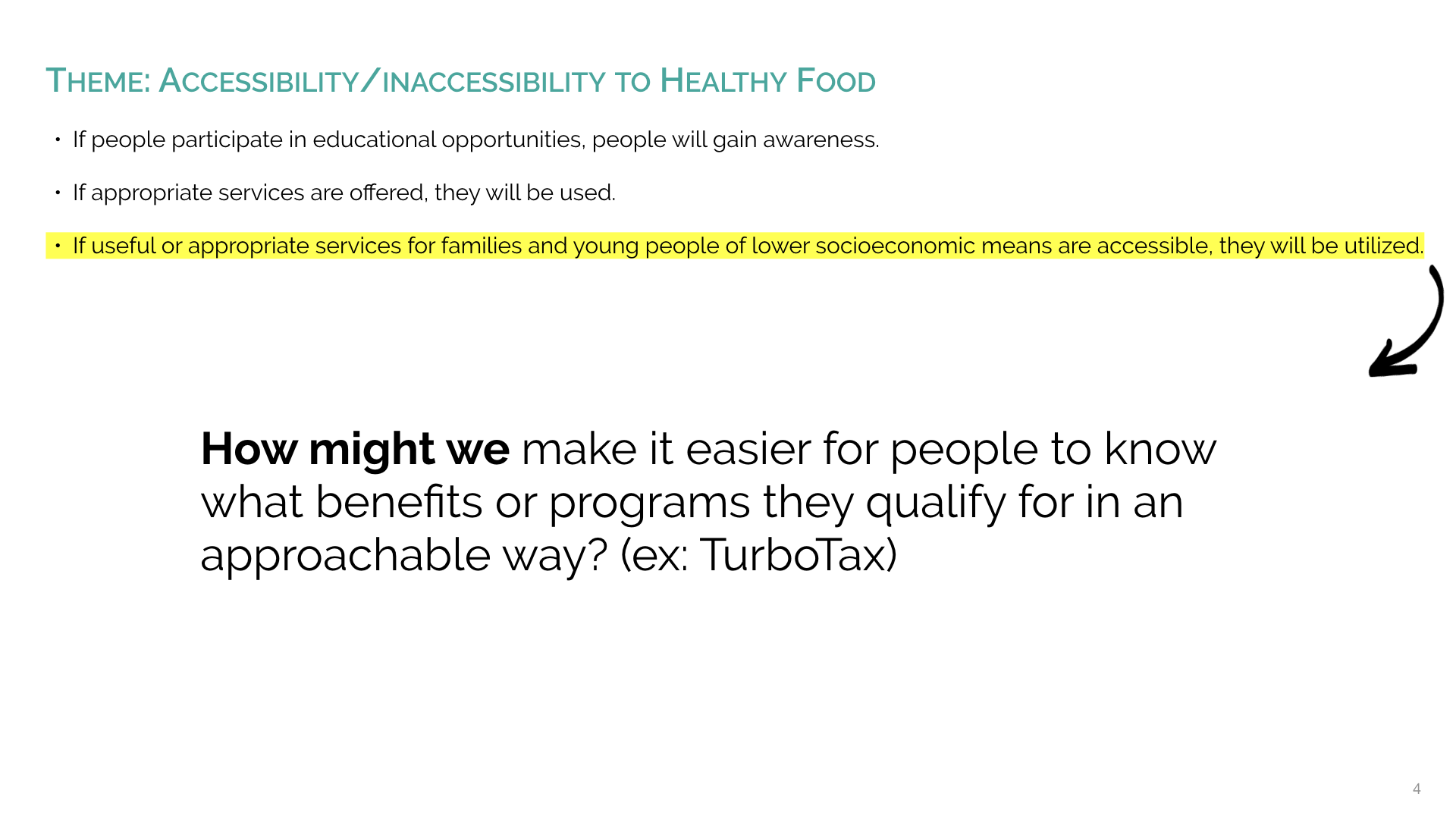Green Heart | 2018
Healthy food options transported. Excess produce from farmers markets delivered to underserved communities by on-demand volunteers.
Green Heart has two purposes - to help local farmers reduce food waste and to bring healthy food options to underserved communities. It connects local farmers market vendors with volunteers who transport excess food from farmers markets to various neighborhood centers.
Applying IDEO.org’s human-centered design methodology - our team of three focused on the three phases of inspiration, ideation, and implementation - to guide our solution.
ROLE
UX/UI Designer + UXR
TEAM
3 UX/UI Designers
TIME
9 weeks
TOOLS
Sketch, InVision
TASK
Create a solution to bring heathy food options to communities in need.
DELIVERABLES
Stakeholder interviews
Competitive Analysis
On-site research
User Testing
Design Sprint
Mockups
Prototypes

Project overview
CHALLENGE
Inspired by our fellow Bay Area residents and others who are subjected to food deserts, we set out to bring healthy food options to communities in need that often lack access to produce that is nutritious, affordable, and easily accessible.
While there are other non-profits that are pursuing different ways of bringing subsidized healthy options to these communities, we hypothesized we could find a way to do this at little to no cost, while maximizing the benefit for everyone involved.
SOLUTION
Green Heart is an app-based/digital platform designed to help local farmers market vendors address food waste issues by connecting them to communities in need. It utilizes volunteers to transport excess food from the markets to various community establishments, providing healthy food options that would have otherwise gone to waste.
The vendor has the ability to choose their market, excess produce, time of pickup and communicate with the volunteer. They will also receive a confirmation after delivery at the food bank.
Vendor experience
Research
As one of our experts noted, “Before you fix, you must learn”. And we did just that. Our research consisted of four areas:
Expert Interviews
User Interviews
Immersion
Analogous Inspiration.
The experts we interviewed work directly with our target audience to approach the nutritional deficit in multiple ways - thorough community cooking classes with affordable ingredients, to grocery store tours, to full nutritional education course material development, and food redistribution models. They highlighted that it is not a lack of knowledge, preference, or cost, but there are other obstacles to acquiring nutritious food or attending classes, including access by public transportation, lack of childcare, language barriers, time constraints, feeling self-conscious about signing up for government or local services, and more.
We also met with users, interviewing them about challenges they face, what their ideal nutritional plan would look like if money was no object, what programs (if any) they take advantage of, etc. We brought these insights back to the group and looked for common themes.
Immersion
Attending a nutrition cooking class at Glide - a San Francisco non-profit and center of social justice - was critical in understanding services that are available for educating community members about inexpensive ways to eat healthy.
Early brainstorming
Our team did many collective brainstorms around food access, distribution, nutritional education, barriers, and underserved communities as a whole.
Themes
Through our user and expert interviews, immersive experiences, and preliminary research, themes started to emerge.
How might we
From these three themes – Community, Accessibility, and Partnerships – we outlined our assumptions and developed How Might We statements to further guide and refine our exploration.



The focus
After much research and deliberation, we narrowed our focus to the donation of excess produce at farmers markets delivered to communities in need. Our assumption was that the farmers who would participate would like some sort of visible symbol to show to their other customers that they donated excess food to the community. This was immediately disproven when talking to users.
Immediately our research showed another company was tackling a similar idea of connecting farmers markets and delivering to communities, in a food truck farmers market fashion. Through talks with an employee at that company, we realized our differences, due to their belief that no farmer would participate without settling on a wholesale price, if not more, for their goods.
Learning from our users
Once we landed on our focus, we knew the best people to help guide our design were the farmers themselves. We waited for until the morning rush was over and then interviewed as many farmers as we could at the Heart of the City Farmers Market in downtown San Francisco. We asked about their background in farming, how long they have been selling at markets, what they do with their food waste currently, and if they would be interested in participating in Green Heart.
The three most valuable things we learned from these interviews were:
One
Farmers do not want any complicated technology that derails their already busy day. Must be intuitive and easy to use.
Two
They did not want any sort of acknowledgement on their stall and viewed their donations as a personal matter, not one that would be used to draw in other customers.
Three
100% of farmers were willing to give their end of day donations for free and did not expect any sort of wholesale compensation.
Two weeks later, we returned to the market with our prototype. Farmers were able to navigate easily and said that it is something they would use. Not only would it help them bring less back to their farms to compost, but they could also feel good that their efforts were being enjoyed by someone in the community.
Full flow
Reflections
Two of my biggest passions are reversing food waste and volunteering. I was finally able to combine the two of them in a project that addressed underserved and potentially malnourished communities. I believe fresh and healthy whole foods should not be a privilege or restricted by cost or proximity, but should be abundant and easily accessible for all. I wanted to combine the opt-in, easily scheduled shift options that I have experienced with Instacart, with the simple two-way communication and updates of rideshare giants.
I loved all the various sources and human-centered design methodologies that shaped our research and ultimately went into our solution. Our ultimate product being so well received by our intended user shows the value of conducting many different types of research before getting too far down the path of developing a solution that might not even work or be of interest for the intended audience involved.










